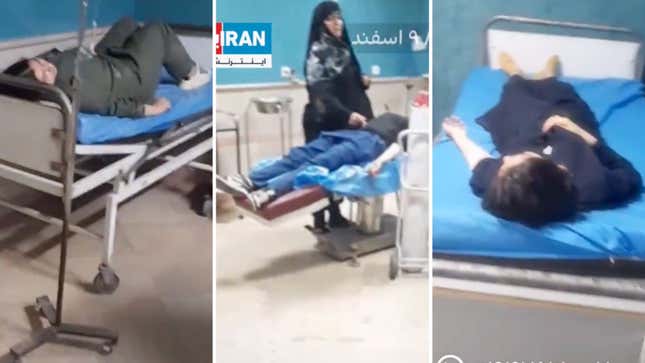Hundreds of Iranian Schoolgirls Have Been Hospitalized After String of Suspected Poison Attacks
“My daughter and two of her friends say they heard something like an explosion and immediately afterwards an unpleasant smell," one parent told the BBC.
EntertainmentEntertainment

Since November, hundreds of schoolgirls in Iran have been hospitalized after experiencing nausea, dizziness, respiratory and neurological symptoms, allegedly due to toxic gas attacks at their schools. Some reported heart palpitations or numbness in their hands and feet. Many said they smelled tangerine and rotting fish before falling ill.
The suspected poisonings have affected anywhere from 800 to over 1,000 students, according to multiple news outlets. On Wednesday, the BBC reported that a new wave of these still-unexplained attacks affected 26 schools across five cities—the largest number since 18 students were first reported to be poisoned at an art conservatory in the religious city of Qom on November 30.
“My daughter and two of her friends say they heard something like an explosion and immediately afterwards an unpleasant smell—something like burned plastic filled the air,” an anonymous parent from Pardis, a suburb of the Tehran province, told the BBC. “They were asked to leave the class and go into the yard. Many of the students started collapsing in the yard. There are kids with asthma and heart problems in my daughter’s class.” In that school alone, a total of 200 students have been hospitalized, and one student is reportedly in a coma.
While no person or group has claimed responsibility, the attacks are suspected to be punishment for young women’s involvement in the fatal anti-government protests that have swept the country since the death of Mahsa Ahmini, the 22-year-old Kurdish woman who died in September while in the morality police’s custody after being arrested for wearing her hijab “improperly.”
-

-

-

-

-

-

-

-

-

-

-

-

-

-

-

-

-

-

-

-

-

-

-

-

-

-

-

-

-

-

-

-

-

-

-

-

-

-

-

-








































